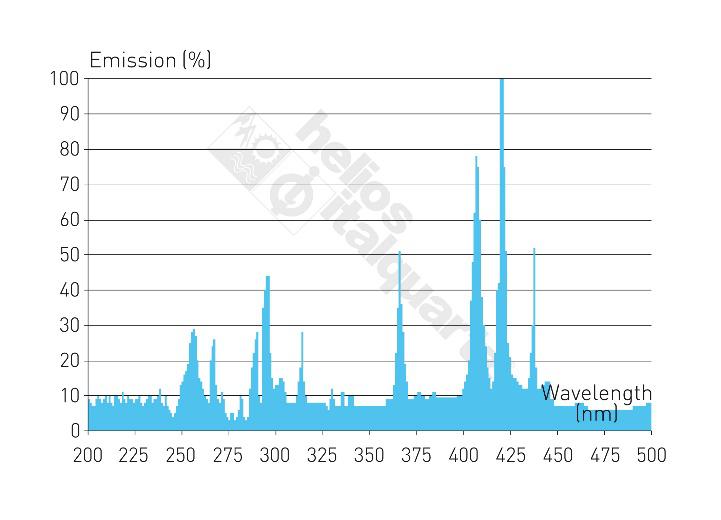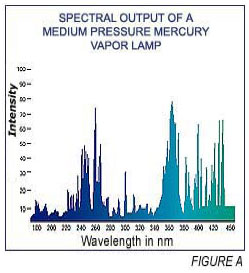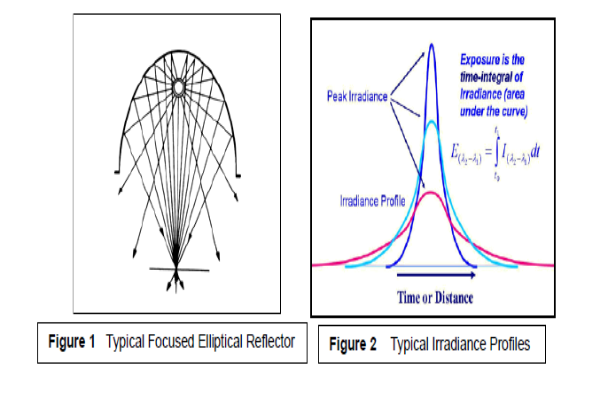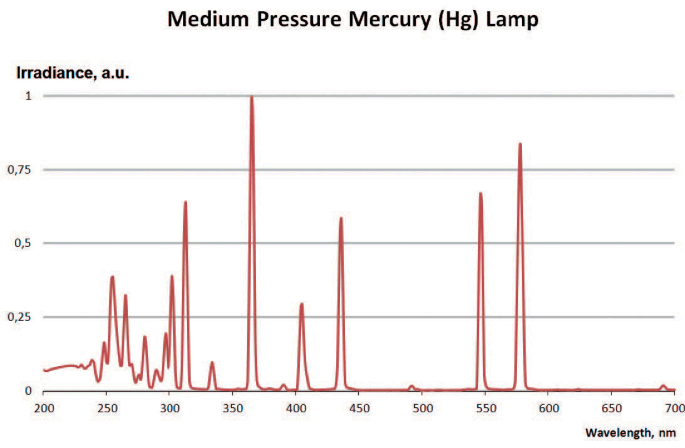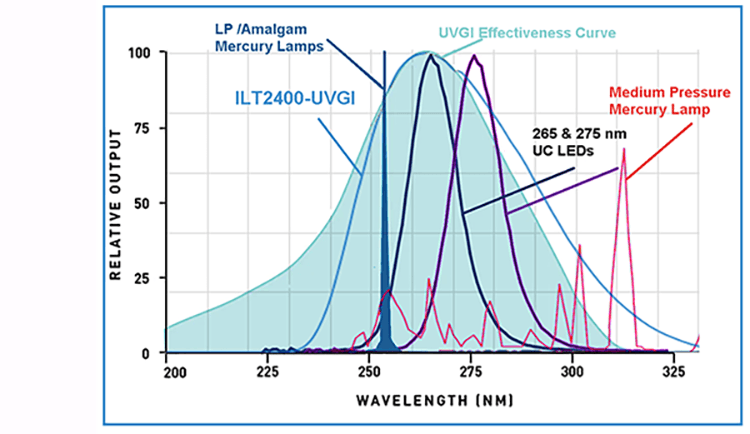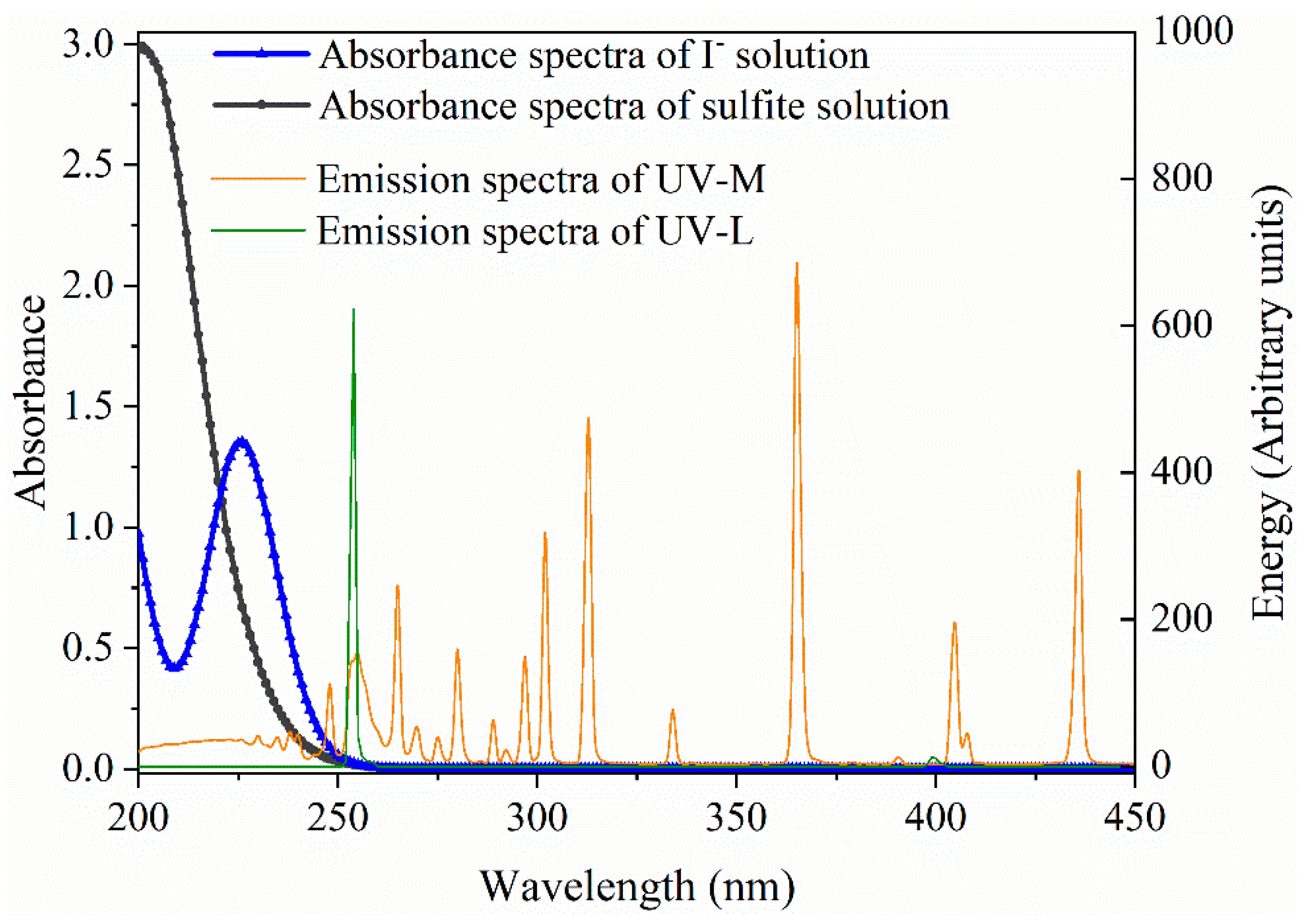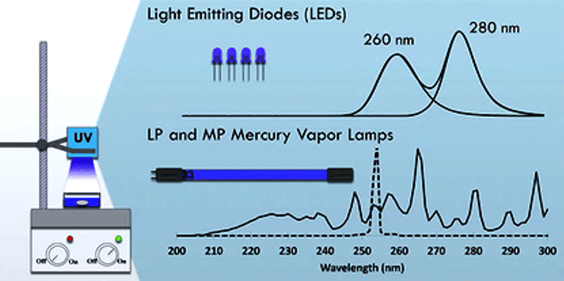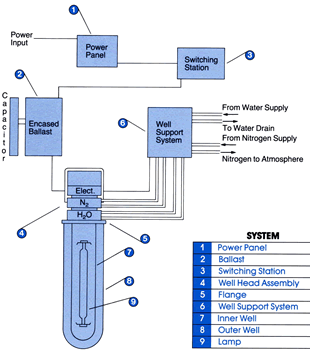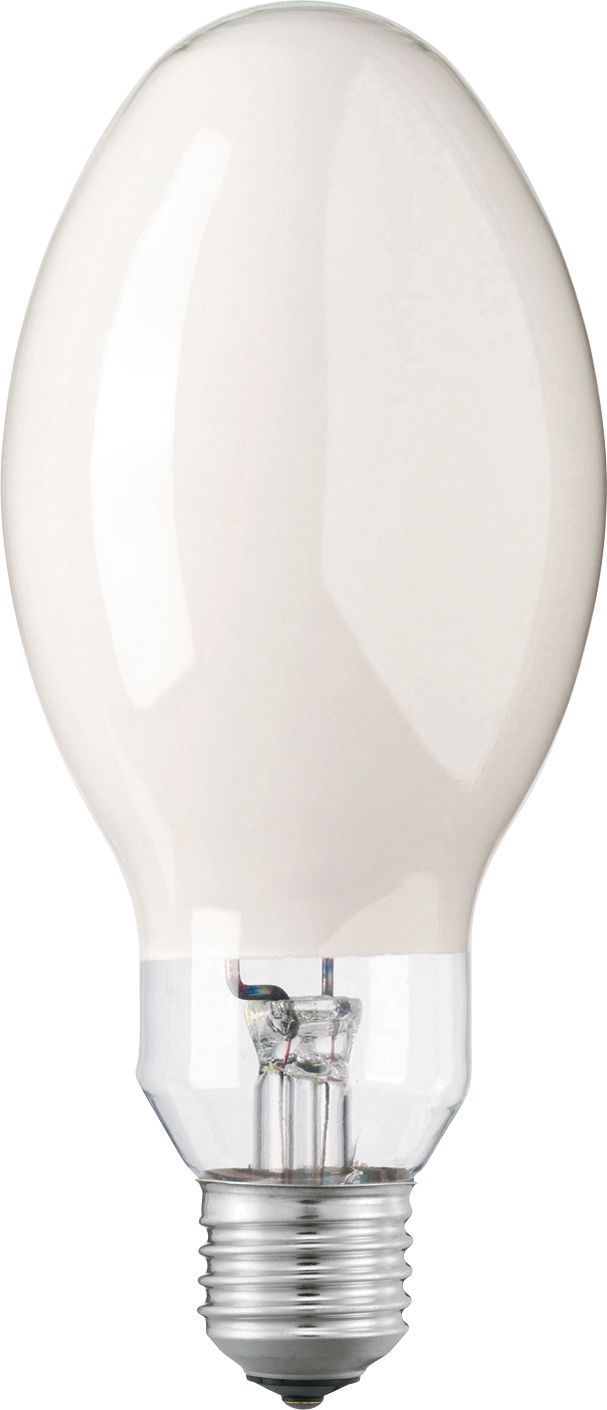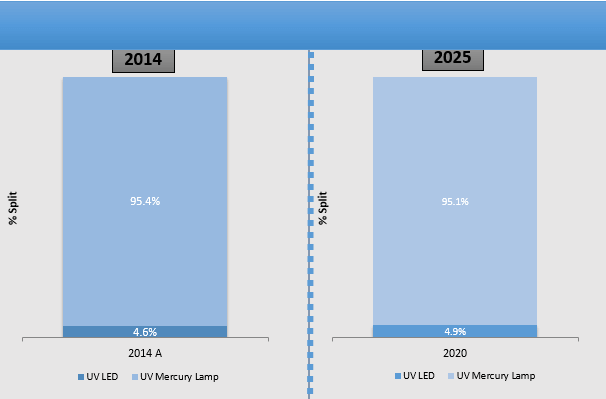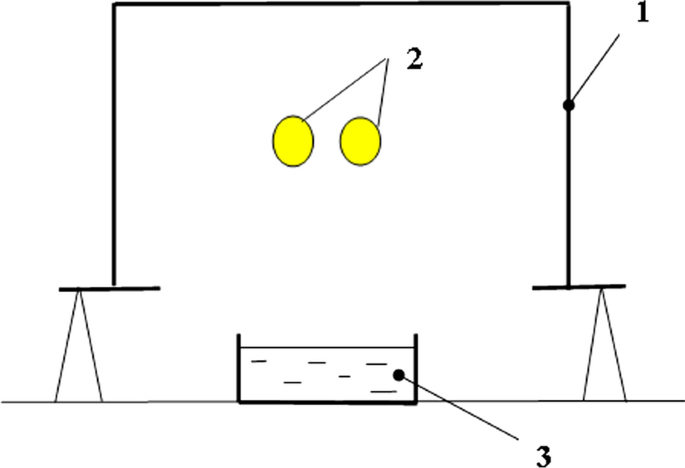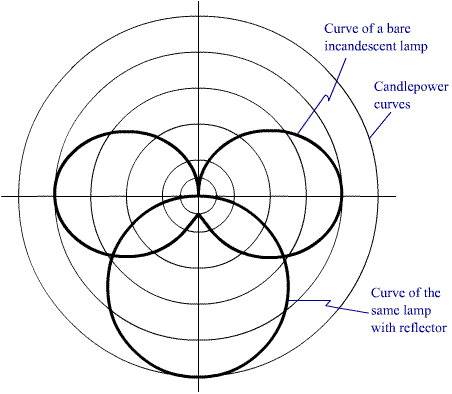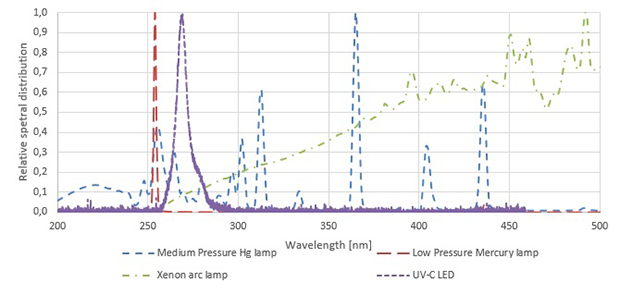Emission Spectrum Of Medium Pressure Mercury Lamp

The spectrum of uv medium pressure lamps can be influenced by doping graphic 5 6.
Emission spectrum of medium pressure mercury lamp. At jelight company we also manufacture low pressure mercury grid lamps. Mercury lamps emit sufficient energy above 300 nm at only certain wavelengths which are very useful for monochromatic irradiation and so the spectrum can also be used as a point light source providing uniform irradiation. Uv led lamps radiate a different emission spectrum from the one of traditional mercury uv lamps. The mercury vapor arc which is created exhibits the unique property of high emission of light in the ultraviolet region of the spectrum.
Custom sizes are also available. Uv medium pressure lamps iron doped the metal halide uv medium pressure iron doped lamps emit uv radiation with peak emission in the uva range at 366 nm and 440 nm. Hot cathode lamps have electrodes that operate at a high temperature and are heated by the arc current in the lamp. Right around 1900 the mercury arc rectifier was developed this luminous device was very important for power conversion.
This intense light beyond the violet region of the visible spectrum has. Typical spectrum of doped medium pressure lamps for curing and special. Unlike most other uv sources the medium pressure lamp mpl has a polychromatic spectral distribution from 190 nm up to the infrared spectrum. These early low pressure lamps used a lot of mercury today s lamps use a tiny amount of mercury.
The distribution of energy over the wavelength ranges is depicted on the left. Thus within the scope of the physical possibilities wavelengths can be selectively generated or reduced in order to adapt the lamps to curing and other applications. Nyc subways were still using original mercury arc rectifiers to convert ac to dc power up until the end of the 20th century. In medium pressure mercury lamps a plasma that emits uv light is generated by applying electrical voltage.
The german physicist leo arons 1860 1919 studied mercury discharges in 1892 and developed a lamp based on a mercury arc. In 1860 john thomas way used arc lamps operated in a mixture of air and mercury vapor at atmospheric pressure for lighting. So it must be considered a virtually monochromatic radiation. The grid design allows for uniform exposure of the uv light and is available in a variety of sizes.
Medium pressure mercury lamps produce characteristic bands at 313 and 365 nm. Charles wheatstone observed the spectrum of an electric discharge in mercury vapor in 1835 and noted the ultraviolet lines in that spectrum. The heat knocks electrons out of the electrodes by thermionic emission which helps maintain the arc in many types the electrodes consist of electrical filaments made of. In particular intense emission occurs in the 240 270 nm and 350 380 nm areas which is where typical uv photoinitiators absorb.
Uv medium pressure lamps lead doped the metal halide uv medium pressure lead doped lamps emit uv radiation with peak emission in the uva range at 357 nm and 420 nm.
